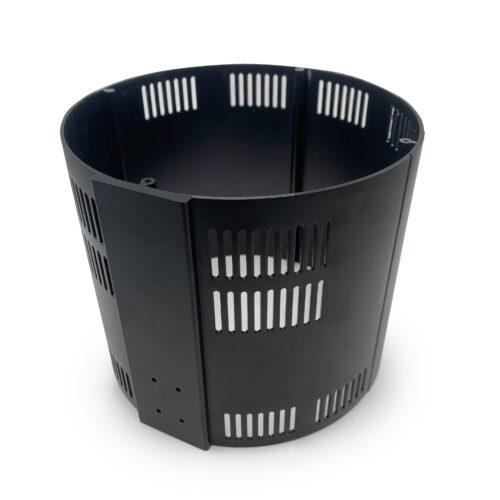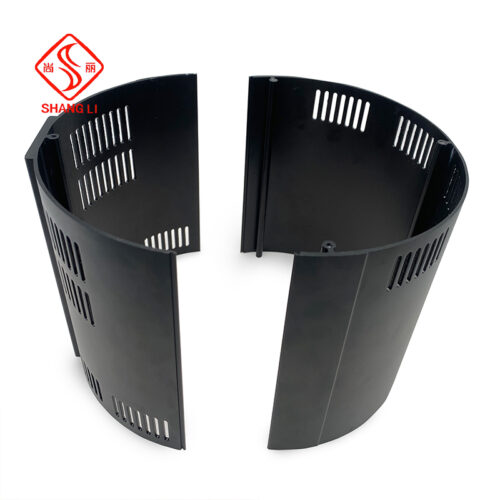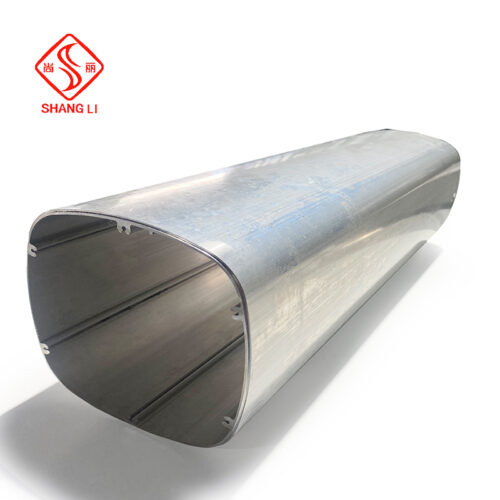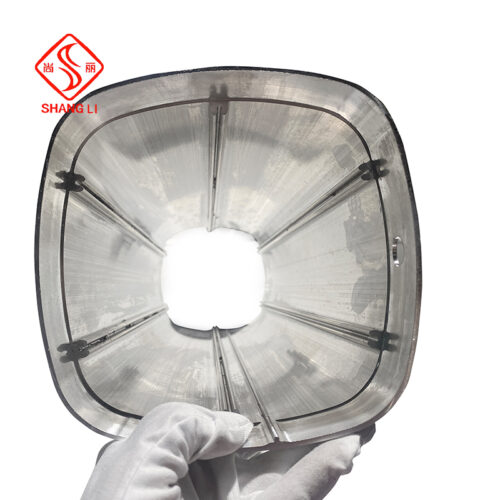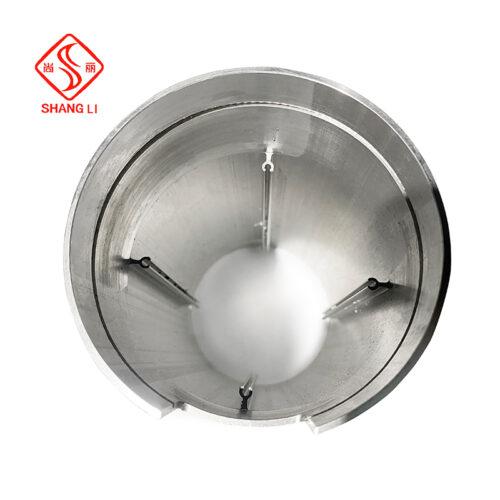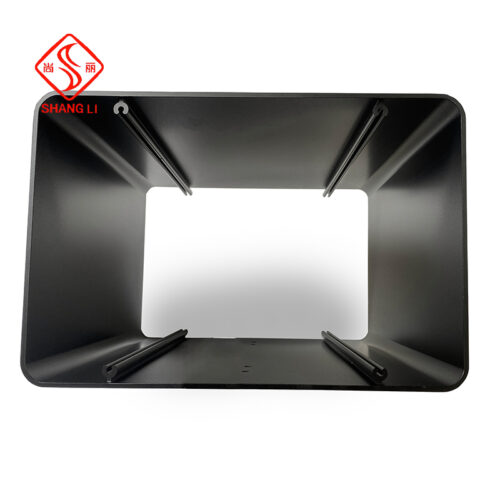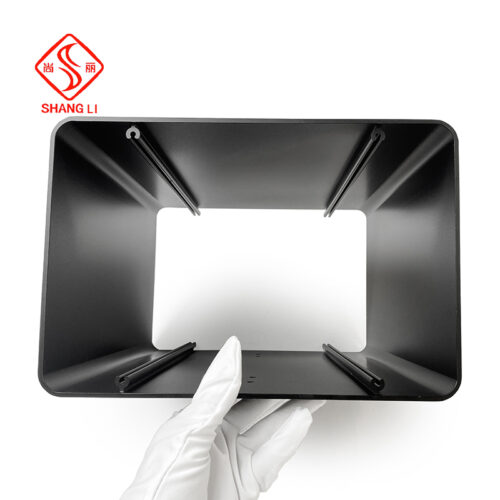At the heart of power electronics, the stability and lifespan of power modules heavily depend on their protective “garment” – the choice of power enclosure. When engineers and procurement managers face the decision of enclosure material, aluminum power enclosures often stand out. This article delves into the five core reasons for choosing aluminum enclosures, revealing how they comprehensively safeguard the heart of your equipment, from thermal efficiency to long-lasting durability.
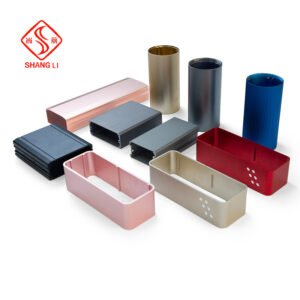
1. Exceptional Thermal Conductivity: The Cornerstone of Stable Operation
Thermal management is a central challenge in power supply design. Aluminum metal, with its inherently high thermal conductivity coefficient (approximately 237 W/m·K), is synonymous with heat dissipation efficiency. Compared to steel (about 50 W/m·K), aluminum rapidly conducts heat generated by internal power components like IGBTs and MOSFETs to the enclosure surface, where it dissipates into the air via convection and radiation.
Technical Advantages:
Significantly reduces hot spot temperatures, preventing component derating or failure due to overheating.
Enhances overall power supply efficiency and power density.
Extends the lifespan of temperature-sensitive components like electrolytic capacitors.
Application Scenarios: High-power LED driver power supplies, industrial inverters, server power supplies, and other demanding thermal environments.
2. Lightweight Design: Reducing Burden, Optimizing Systems
Aluminum’s density (approx. 2.7 g/cm³) is only about one-third that of steel. This property delivers significant weight-saving advantages:
Core Value:
Reduces overall device weight: Crucial for portable devices, wall-mounted units, or industrial equipment requiring frequent movement.
Lowers shipping and installation costs: Weight reduction translates directly into logistics savings for bulk shipments.
Simplifies structural design: Lighter enclosures reduce demands on supporting structures, aiding device miniaturization.
3. Remarkable Strength & Durability: Ensuring Long-Term Reliability
An aluminum enclosure is far from “weak.” Through alloying (using common grades like 6063 or 6061 aluminum) and robust structural design (e.g., reinforcing ribs), aluminum enclosures readily meet the strength requirements of industrial applications.
Durability Manifestations:
Impact and deformation resistance: Effectively protects internal delicate electronics from physical damage.
Corrosion resistance: The naturally formed dense oxide layer on aluminum provides basic protection. Anodizing significantly enhances corrosion and abrasion resistance, enabling the enclosure to withstand harsh industrial environments like humidity and salt spray.
Extended service life: With proper application and maintenance, an aluminum power enclosure can provide reliable protection for ten years or longer.
4. Superior Electromagnetic Shielding (EMI/RFI) Performance: Guardian of Clean Operation
Power supplies are major sources of electromagnetic interference (EMI). Aluminum, being an excellent conductor, creates an effective Faraday cage effect:
Shielding Principle & Advantages:
Reflects and absorbs interference: The aluminum enclosure effectively reflects external electromagnetic waves and absorbs/dissipates internally generated electromagnetic noise.
Ensures compliance: Helps devices easily meet stringent Electromagnetic Compatibility (EMC) certifications like FCC and CE.
Improves signal integrity: Prevents power supply noise from interfering with sensitive communication or control circuits within the device.
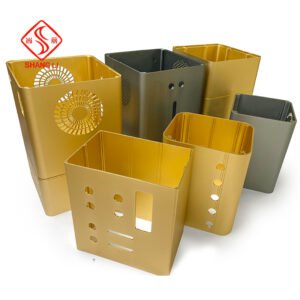
5. Excellent Formability & Customization Flexibility: Perfect Fit for Your Needs
Aluminum’s superb ductility and mature manufacturing processes (extrusion, die-casting, CNC machining, sheet metal bending) make it an ideal choice for custom enclosures.
Customization Advantages:
Precise fit: Allows for exact cutouts and structural design based on internal PCB dimensions, heatsink shape, and interface locations.
Functional integration: Facilitates the integration of cooling fins, mounting brackets, grounding terminals, waterproof sealing grooves (IP ratings), etc.
Diverse surface finishes: Offers anodizing (various colors), sandblasting, brushing, powder coating, etc., to meet aesthetic and functional needs.
Rapid response: Relatively simpler tooling (especially for extrusion and sheet metal) shortens new product development and prototyping cycles.
An aluminum power enclosure is far more than a simple container; it is an integrated solution combining efficient heat dissipation, lightweight strength, enduring durability, electromagnetic cleanliness, and flexible customization. From ensuring critical equipment operates stably under high temperatures to resisting harsh environmental conditions; from reducing system burden to meeting stringent EMC standards, and perfectly adapting to unique designs – the aluminum enclosure offers comprehensive performance advantages. It is the intelligent choice for engineers seeking to guarantee power module reliability and overall device performance. In the era of power electronics demanding efficiency, reliability, and compactness, choosing an aluminum power enclosure means selecting a powerful guardian for your device’s core power source.



